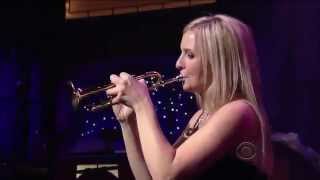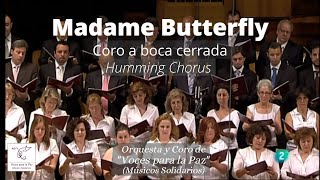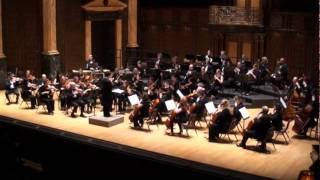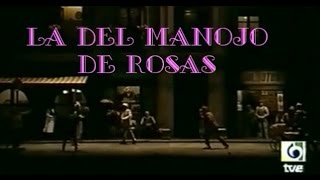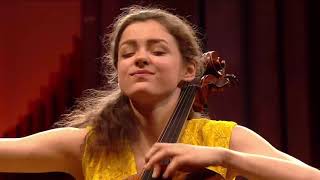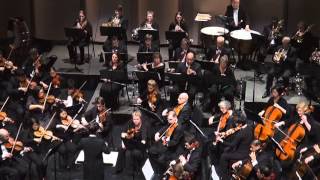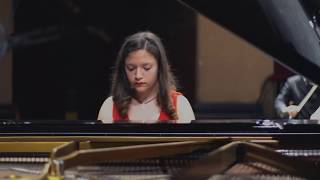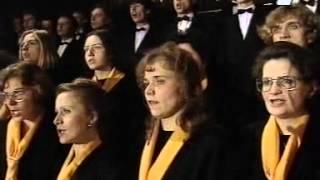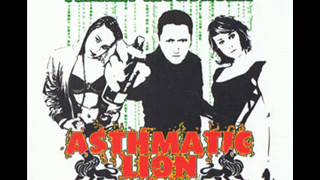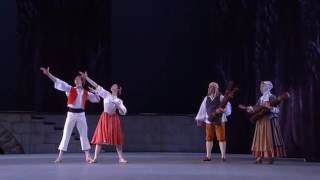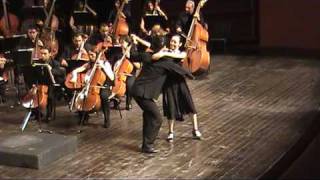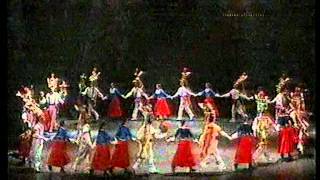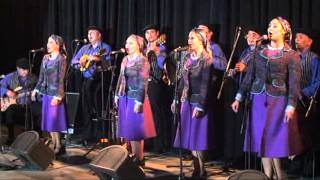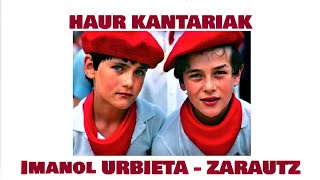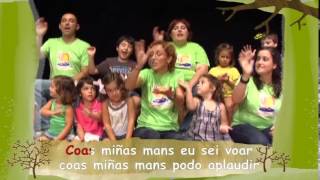Recommended music videos for initiation to classical music
Alessandro Marcello (1673–1747) was an Italian nobleman and dilettante who was interested in a variety of fields, including poetry, philosophy, mathematics, and, perhaps most notably, music. A contemporary of Antonio Vivaldi , Marcello gave concerts in his hometown of Venice . He composed several sets of concerts, including concertos entitled La cetra (The Lyre), as well as cantatas, arias, canzonettas, and violin sonatas. He used, according to the Grove Dictionary of Music and Musicians , “a concise use of Vivaldian counterpoint, elevating his status to the highest level of the Venetian Baroque classical concerto”; today Marcello is considered a highly accomplished composer. His brother Benedetto Marcello (1686–1739) was also a celebrated composer.
Oboe Concerto in C minor . “The concerto in question is the only one that has come down to us from the hand of Alessandro Marcello , brother of the equally famous composer and writer Benedetto Marcello . The unusual factor in the set of parts found in the city of Schwerin is that the manuscript parts are presented in C minor instead of D minor, the key of the parts published in Amsterdam in 1716 by Jeanne Roger . While I was at university, I also noticed that J.S. Bach had composed this same concerto for solo harpsichord, in the key of D minor” (BWV 974) (Nancy Bonar Lehrer). The concerto consists of three movements, of which we offer the third today, in a version for trumpet instead of oboe; the soloist is Alison Balsom (1978), an English trumpeter who, despite her youth, was named Artist of the Year at the 2013 Gramophone Awards ; in 2009 she performed as a soloist at the London Proms . She has been awarded honorary doctorates from the University of Leicester and Anglia Ruskin University , and is an Honorary Fellow of the Guildhall School of Music and Drama .
Marcello's best-known work is the Oboe Concerto in D minor , whose third movement we offer today in a trumpet version (in C minor) with the English trumpeter Alison Balsom as soloist.
Giacomo Puccini (1858-1924) was an Italian opera composer, considered among the greatest of the late 19th and early 20th centuries. He was a visionary, creator of the concepts of music that would govern cinema during the 20th century ; for him, the use of modal passages or polytonal devices and tonality or atonality were matters of effect defined by the dramatic needs of the work. For example, in Tosca , the way he replaces the text with musical passages anticipates the action that is about to happen. In addition to twelve operas, Puccini wrote other notable works, including a Gloria Mass, a Hymn to Rome , a symphonic caprice, two symphonic preludes, and three minuets for string quartet. He is considered the successor of Giuseppe Verdi .
Madame Butterfly is an opera in three acts (originally in two acts) with music by Giacomo Puccini to an Italian libretto by Giuseppe Giacosa and Luigi Illica . Puccini based his opera in part on the short story " Madame Butterfly" (1898) by John Luther Long , which was dramatized by David Belasco. Puccini also based it on the novel Madame Chrysanthème (1887) by Pierre Loti . According to one scholar, the opera was based on events that actually occurred in Nagasaki in the early 1890s.
The Choir with a closed mouth, which we offer today, belongs to Act II of the opera Madame Butterfly in a version by the Orchestra and Choir of Voices for Peace conducted by maestro Miguel Roa .
Ludwig van Beethoven (1770-1827). Along with Bach and Mozart, he forms part of the trio of giants of Western music. Born in Bonn , his father, of Flemish origin, attempted to showcase him as a second Mozart , although it was a notable failure. Despite this, from the age of nine, the organist Christian Gottlob Neefe captivated him with the study of Bach , whom he would always remember. In 1787, he moved to Vienna with the intention of taking Mozart classes, but the death of his mother brought him back to Bonn a few days later. And so, after five years, he returned to Vienna where he was able to study with Haydn and Salieri . However, his profession as an excellent pianist could not be realized due to the deafness that attacked him the following year, leaving him totally incapacitated in this faculty.
The catalog of Beethoven's works . There are 138 musical works composed by Beethoven , arranged by numbers known as opus ("work" in Latin) or its abbreviation op. , assigned by the composer's publishers during his lifetime. In addition, there are another 205 works that do not have opus numbers and were published after the composer's death. These works were assigned WoO numbers (Werke ohne Opuszahl, "works without opus numbers"). This catalog was first compiled by Georg Kinsky and Hans Halm (Das Werk Beethovens) in 1955.
The Fifth Symphony is one of the most well-known and popular works in the history of music . Of its four movements, today we will review the first. This movement, as was customary at that time since the beginning of Classicism , is written in a rapid mode and in sonata form : 1) exposition of two themes contrasting in character and tonality; 2) development of both themes; restatement in the same tonality of the two main themes. Today it is offered to us by the Texas Medical Center Orchestra, conducted by Libi Lebel , a Russian pianist and conductor who has conducted various American, Russian, and Romanian orchestras and is characterized by her transparent technique and passionate character. She is currently the principal conductor of the Texas Medical Center Orchestra.
Pablo Sorozábal (1897-1988) was born in Donostia/San Sebastián , according to his own memoirs, "into a working-class, Basque-speaking family." He began his violin studies at the San Sebastián Municipal Academy of Music ; at 17, he joined the San Sebastián Casino Orchestra, and at 21, the Madrid Philharmonic Orchestra . With a scholarship from the Gipuzkoa Provincial Council, he completed his studies in Leipzig and Berlin . Due to his republican ideas, after the Civil War , he was isolated as a composer, which made it difficult for him to premiere the various zarzuelas he composed in Madrid . His tenure as director of the Madrid Symphony Orchestra ended on bad terms in 1952 when he was forbidden to play Shostakovich 's Leningrad Symphony , an event that led to his resignation.
La del manojo de rosas is a zarzuela, classified as a lyrical sainete, in two acts with lyrics by Anselmo C. Carreño and Francisco Ramos de Castro , and music by the maestro Pablo Sorozábal , premiered with great success at the Fuencarral Theater on November 13, 1934. In this zarzuela he knew how to reflect the atmosphere of Madrid at the time of its premiere, wisely combining traditional sainete rhythms, such as the pasodoble, the mazurka or the chotis , with others such as the fox trot or the farruca , giving them a new character and a certain danceable sense. As is usual in many works of the genre, the sentimental plot predominates; but certain touches of social awareness can be appreciated in the atmosphere of that time.
Recommended classical music videos
The Austrian composer Joseph Haydn (1732-1809), whose brother Michael Haydn was also a notable composer, was one of the main pillars on which Classicism was based (1750-1820). At the age of six, he began his musical studies on harpsichord and violin. At the age of eight, he was admitted as a chorister at St. Stephen's Cathedral in Vienna , where he continued his studies in singing, piano, and violin. After his voice changed, he had to survive by working multiple jobs while studying composition by analyzing the works of Carl Philipp Emanuel Bach. He maintained a close friendship with Mozart and was Beethoven 's teacher. He laid the main foundations of sonata form and the formal structure of the string quartet and the symphony. He died at the age of 77 in Vienna .
The catalog of Haydn's works . Joseph Haydn's works are classified today according to the system devised by Anthony van Hoboken. Each work is identified by a Roman numeral corresponding to a category, which in most cases is identified with a genre. Some categories have subdivisions, indicated by a lowercase letter followed by an Arabic numeral corresponding to the order of the specific work within the category.
These figures are preceded by the word Hoboken (in memory of the author of the catalogue) and sometimes by Hob (its abbreviation).
The concerto is a musical form written for one or more solo instruments accompanied by an instrumental ensemble. It was Vivaldi who established the fundamental foundations of its structure with three movements (Fast I, Slow II, Fast III) and presented as a dialogue between the soloist(s) and the instrumental ensemble.
Haydn's Cello Concerto No. 2 in D major, Hob. VIIb/2, Op. 101 for cello and orchestra is one of the most frequently performed by cellists and requires a much higher level of technique than Haydn 's other cello concertos . It is structured in three movements: I (0´50´´) ALLEGRO MODERATO .-. II (15´01´´) ADAGIO .-. III (19´55´´) RONDO – ALLEGRO.
Today's version is offered by Russian cellist Anastasia Kobekina (1994) accompanied by the Orchestre Royal de Chambre de Wallonie under the baton of French maestro Frank Braley .
Otto Nicolai (1810–1849) was a Prussian composer and conductor, founder of the Vienna Philharmonic . He is best known for his operatic setting of Shakespeare 's comedy The Merry Wives of Windsor (Die lustigen Weiber von Windsor). Besides five operas, Nicolai also composed works for orchestra, chorus, and solo instruments. A child prodigy, Nicolai was born in Königsberg, Prussia ; at a young age he left his parents' home to study with Carl Friedrich Zelter in Berlin . After success in Germany , he became a musician at the Prussian embassy in Rome , and during the 1840s was a prominent figure on the Vienna music scene. In 1844 he was offered the post, previously held by Felix Mendelssohn , of Kapellmeister ('kapellmeister') at Berlin Cathedral ; However, he would not settle in Berlin until the last year of his life. On March 9, 1849, he suffered a fall and died from the severe blow. On the same day of his death, he had been appointed a member of the Royal Prussian Academy of Arts .
The Merry Wives of Windsor (original German title: Die lustigen Weiber von Windsor) is an opera in three acts with music by Carl Otto Nicolai to a German libretto by Salomon Hermann von Mosenthal , based on William Shakespeare 's comedy The Merry Wives of Windsor. It premiered in Berlin on 9 March 1849. The opera is a Singspiel (a musical genre close to operetta), containing considerable spoken dialogue between musical numbers. The opera is still popular in Germany , and the Overture is sometimes heard in concerts abroad.
Today we offer this overture in a version by the Texas Medical Center Orchestra conducted by Russian maestro Libi Lebel .
Cécile Chaminade (1857-1944) was a French pianist and composer born in Paris who began studying piano with her mother. At the age of 18, she gave her first concert, which made her famous. As a composer, she wrote nearly 400 works; more than half of them for piano and salon songs, in addition to other chamber and symphonic compositions. She was the first composer to be awarded the title of Chevalier de la Legion d'Honneur , the highest civilian honor awarded in France .
Catalogue of Chaminade's works . His works are classified by their Opus number (from the Latin opus 'work'), a term used in music to catalogue the works of most composers. From the 17th century , this form of cataloguing began to be used whenever a work was published, preceding the word Opus , or its abbreviation Op ., with the serial number of the work.
Concerto for Piano and Orchestra, Op. 40. It is a single-movement composition for piano and orchestra by Cécile Chaminade , which is offered today by the Italian pianist Rosamaria Macaluso accompanied by the Sicilian Symphony Orchestra conducted by the French maestro Jean-Luc Tingaud .
Ariel Ramírez (1921-2010) is one of the most important figures in Argentine nativism. He studied piano and composition, and at the age of 20, encouraged by Atahualpa Yupanqui , he traveled throughout the country, experiencing the diverse musical expressions of each region. Nine years later, he undertook a four-year trip through Europe , giving several concerts of music from his homeland. Upon his return to Argentina, he formed a company of musicians and dancers with which he toured the country for 20 years. After this period, he performed as a piano soloist in countless recitals, interspersing his own works.
Creole Mass. Among the numerous songs and works he wrote, it is worth highlighting the Creole Mass that we offer today; a musical work of a religious and folkloric nature with translated and adapted liturgical texts. The work, although it strictly follows the most orthodox Catholic liturgical plan, acquires a great singularity due to the use of traditional musical rhythms from Argentina . Its structure is made up of five movements, each of which is a replica of some traditional rhythm or musical form from Argentina : I (0´00) KYRIE (vidala-baguala) .-. II (3´52´´) GLORIA (carnavalito-yaraví) .-. III (10´13´´) CREDO (chacarera trunca) .-. IV (13´54´´) SANCTUS (Cochabamba carnival) .-. V (16´26´´) AGNUS DEI (Pampas style)
Today it is presented by tenor Zampa Quilpidor with the Polish choir Warszawski Chór Międzyuczelniany accompanied on piano by the composer himself Ariel Ramírez and the Quarteto de los Andes all directed by maestro Janusz Dąbrowski
Recommended music videos for all tastes
Carey Bell (1936-2007) was an American blues harmonica player, singer, and songwriter. He was known for his distinctive use of the chromatic harmonica and his sharp, attacking phrasing. He played in Muddy Waters ' band from 1970 to 1974; he was then a regular member of the Willie Dixon Band until the early 1980s; and later continued as a solo artist, touring virtually all over the world until his death in mid-2007. Today we feature his performance in Bern, Switzerland , at the 2001 Jazz Festival .
Fermin Muguruza (1963) is a Basque singer and film director born in Irun (Gipuzkoa). With his brother Iñigo, he founded the group Kortatu , one of the most important groups of Basque Radical Rock ; after the group dissolved, they founded Negu Gorriak and after its demise, he continued his solo career with performances in numerous European, American and Asian countries, as well as other performances in collaboration with various internationally renowned artists. Of abertzale and internationalist ideology, he has been committed to and collaborated with various Basque and international social and political entities; he has been defined as "one of the most influential figures on the Basque music scene".
Paulina Rubio (Mexico City, June 17, 1971) nicknamed "The Golden Girl" is a Mexican singer, songwriter, actress, television presenter, model and businesswoman. She is the daughter of actress Susana Dosamantes , whose projection in Mexican cinema influenced her since childhood to pursue the same aspiration of becoming famous. She has received nominations for the Grammy Awards and the Latin Grammy Award seven times. Forbes magazine included her in its list of the "50 most powerful women in Mexico ", she was also considered one of the celebrities with the most followers on Twitter and according to YouGov she is one of the most popular Latin artists in the USA .
Singer Heize was born in Daegu, South Korea . As a child, she studied cello and played classical music and ballads. However, she accidentally heard rap , which she was drawn to and began writing her own lyrics. Before her debut, she would write while in class at school and was called upon by a teacher, who thought she would be scolded, but the teacher told her to pursue music if she enjoyed it. Upon hearing her teacher's words, she decided to become a singer, making her debut in 2014 with her first mini-album, " Heize ." Today we're featuring a collection of her most successful songs.
Recommended peculiar videos
Boris Asafyev (1884–1949) was a Russian and Soviet composer, writer, musicologist, music critic, and one of the founders of Soviet musicology. Asafiev studied philology and history at St. Petersburg University , graduating in 1908; at the same time, he took courses in orchestration with Rimsky-Korsakov and in musical composition with Anatoly Lyadov at the Conservatory, graduating in 1910. Born during the Russian Empire, Boris Asafiev saw the birth of the USSR , where he strongly influenced Soviet music. His compositions include ballets, operas, symphonies, concertos, and chamber music.
Flames of Paris or The Flames of Paris is a full-length ballet choreographed by Vasily Vainonen with stage direction by Sergei Radlov and music by Boris Asafyev based on songs of the French Revolution . The libretto by Nicolai Volkov and Vladimir Dmitriev was adapted from a book by Felix Gras . It premiered at the Kirov Theatre in Leningrad on 7 November 1932. The Flames of Paris is a ballet considered "revolutionary" that takes the French Revolution as its theme, including in its setting the storming of the Tuileries Palace by revolutionary soldiers and their victorious march on Paris . The plot is taken from Felix Gras 's 1896 Provençal novel Li Rouge dou Miejour , which was translated into French as Les Rouges du Midi (The Reds of the South).
Leroy Anderson (1908–1975) was an American composer of short orchestral light music pieces, many of which were premiered by the Boston Pops Orchestra under Arthur Fiedler . John William S has described him as "one of the greatest American masters of light orchestral music". Anderson received his first piano lessons from his mother, who was a church organist. He went on to study piano at the New England Conservatory of Music and Harvard University, receiving a Bachelor of Fine Arts degree, cum laude, in 1929. He worked as an organist, choirmaster, and bandleader, making numerous arrangements for dance bands in Boston .
Blue Tango is an instrumental composition by Leroy Anderson , written for orchestra in 1951 and published in 1952. Billboard ranked it the number one song of 1952; from then on, it was reproduced in numerous versions, also winning numerous awards.
Today we can see it performed by the Cairo Opera Orchestra under the direction of the Greek maestro Lisa Xanthopoulou and staged by the dancers Zeinab Mohamed and Ahmed Saleh .
(Inauteria) Alakiketan was the continuation of the shows " Irradaka " (1987) and " Zortziko " (1988), which premiered in 1992 at the Arriaga Theatre in Bilbao . In 1993, " Muriska ", a dance drama or choreography based on the pastorals of Zuberoa , was added, and the whole set was premiered for the first time at the Olite International Festival . This video, Inauteria (Carnival), is part of the latter format. Direction, choreography and costumes: Juan A. Urbeltz , Musical direction and arrangements: Marian Arregi . (Extracted from the commentary at the bottom of the video)
Argia Dantza Taldea is a Basque dance group from San Sebastián, made up of around 45 members, directed by Juan Antonio Urbeltz (1940). They have collected numerous Basque dances in situ, grouped into cycles that prioritize authenticity in their choreographic, musical, instrumental, and even costume versions. At the 1968 Middlesbrough International Folklore Festival (England), they won first prize for dance among 28 groups from 22 nations. In 1998, the Alfred Toepfer Foundation in Hamburg awarded them the European Prize for Popular Art .
Bafona , an acronym for National Folkloric Ballet , is a Chilean dance group that is responsible for keeping the country's folkloric traditions alive. They are noted for performing dances such as the cueca , Easter Island dances , northern dances (such as the " Diabladas " from La Tirana ), and Chilote dances , among others. It was created in 1965 as the Aucaman National Folkloric Ballet at the initiative of a group of physical education teachers led by Claudio Lobos Amaro . In 1969 it acquired its current name, National Folkloric Ballet , at the same time that the Mexican Rodolfo Reyes Cortés took over the direction of the group.
This dance group has toured much of the world, performing at events such as the 1992 Seville Universal Exposition, the 1998 Lisbon Expo, the Shanghai Arts Festival (2003), and around ten times at the Viña del Mar International Song Festival , its most successful performance being at the 2006 competition, when they were awarded all the prizes intended for artists who perform on stage: Silver Torch, Gold Torch, Silver Seagull , and, after the enthusiasm of the public who asked for the Gold Seagull , an award that had been eliminated at that time, they received a new Silver Seagull . Figures such as Andrés Pérez and Fernando Alarcón passed through this group.
Recommended music videos for children
Various Wikipedia articles have been used to write these texts.
The texts of Videomusicalis are written in Basque, Spanish and English.





